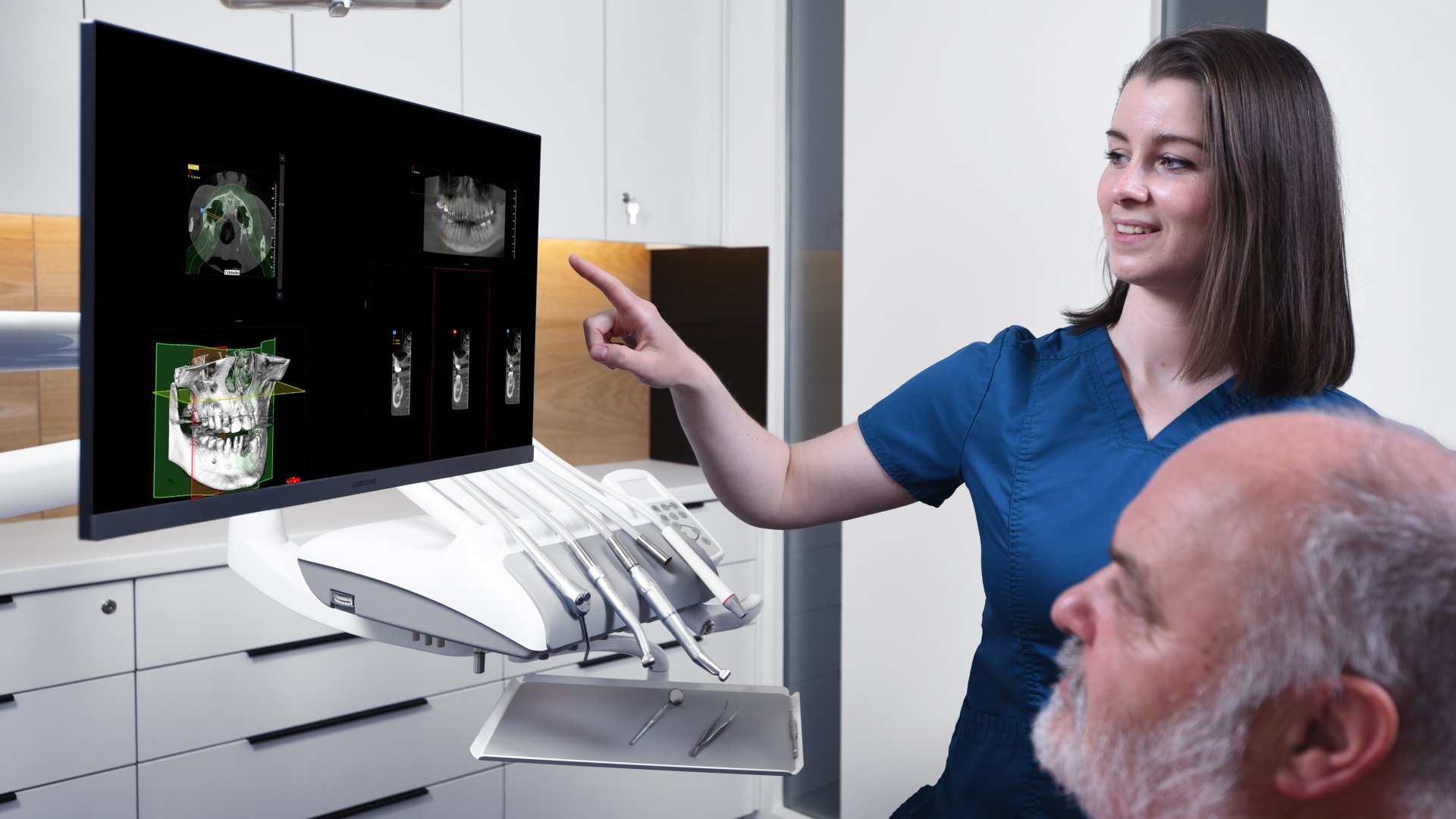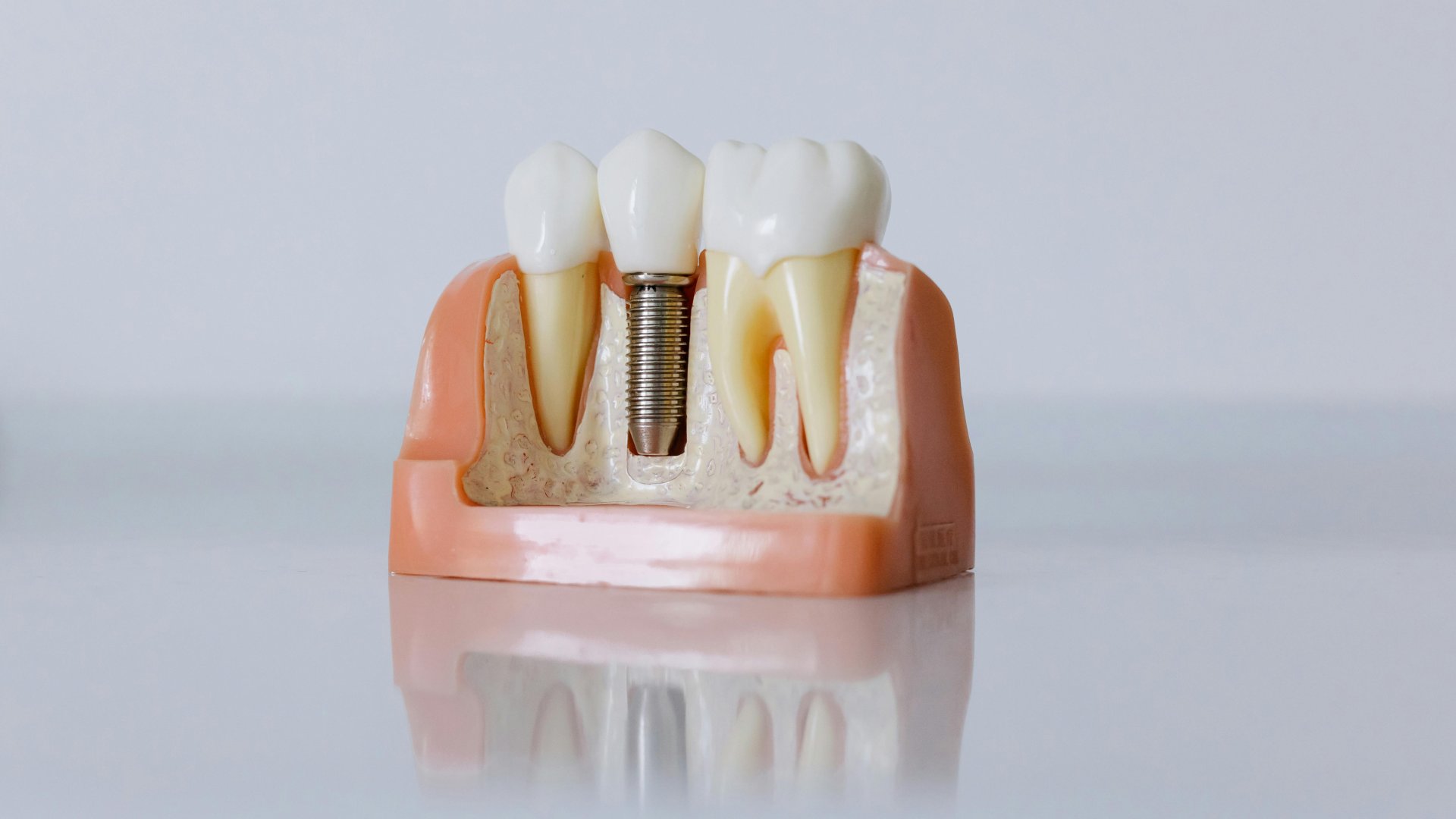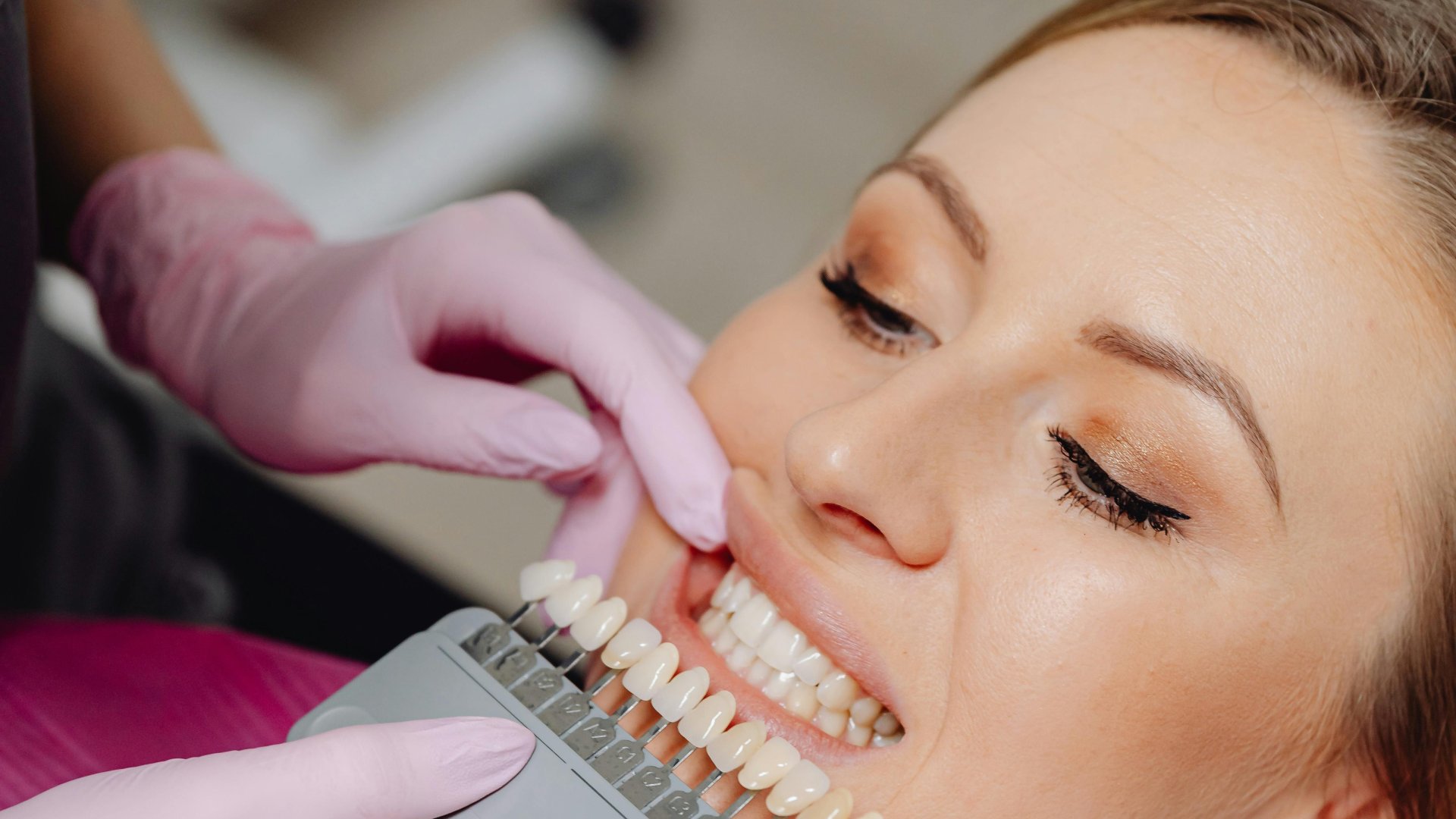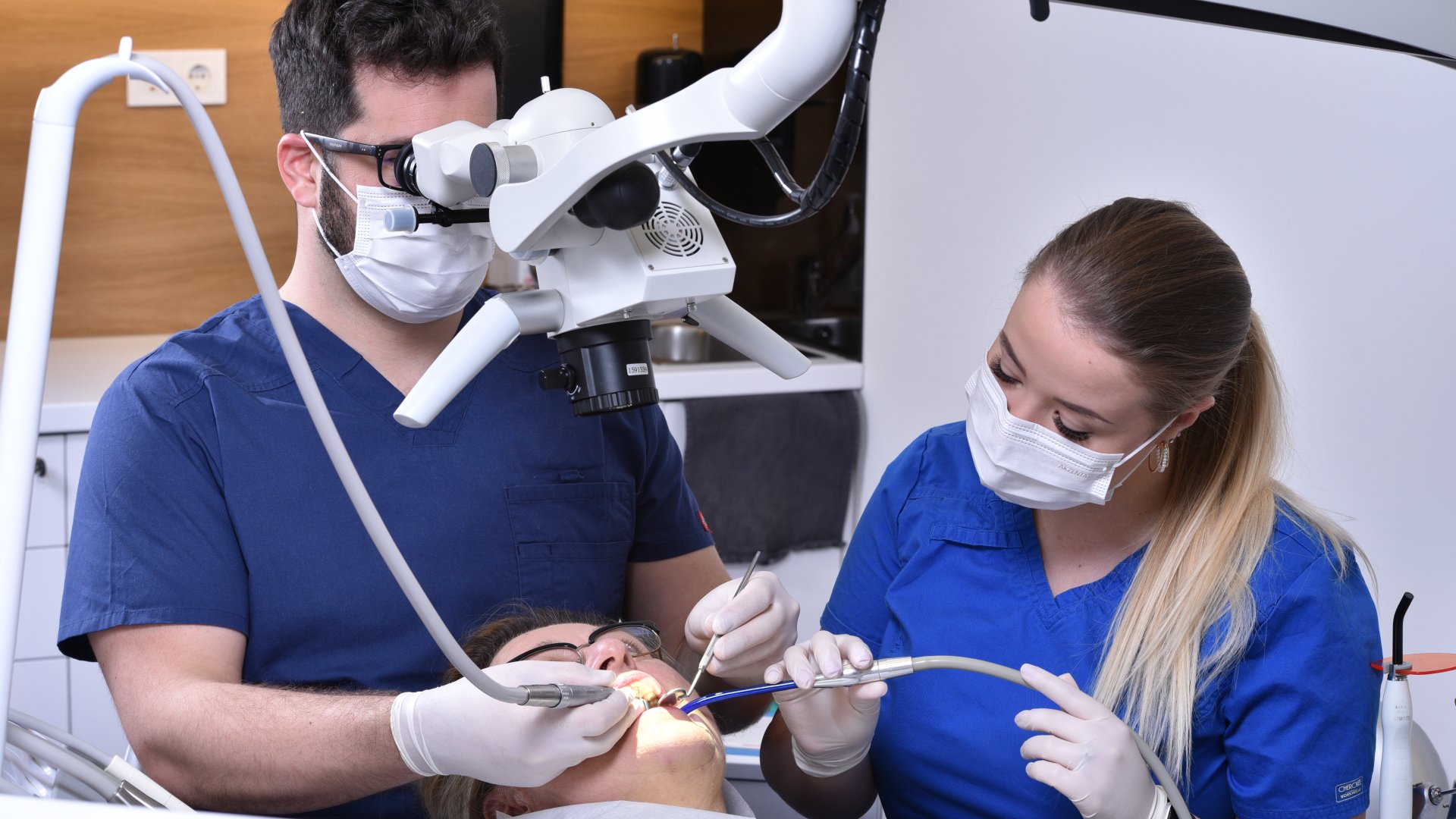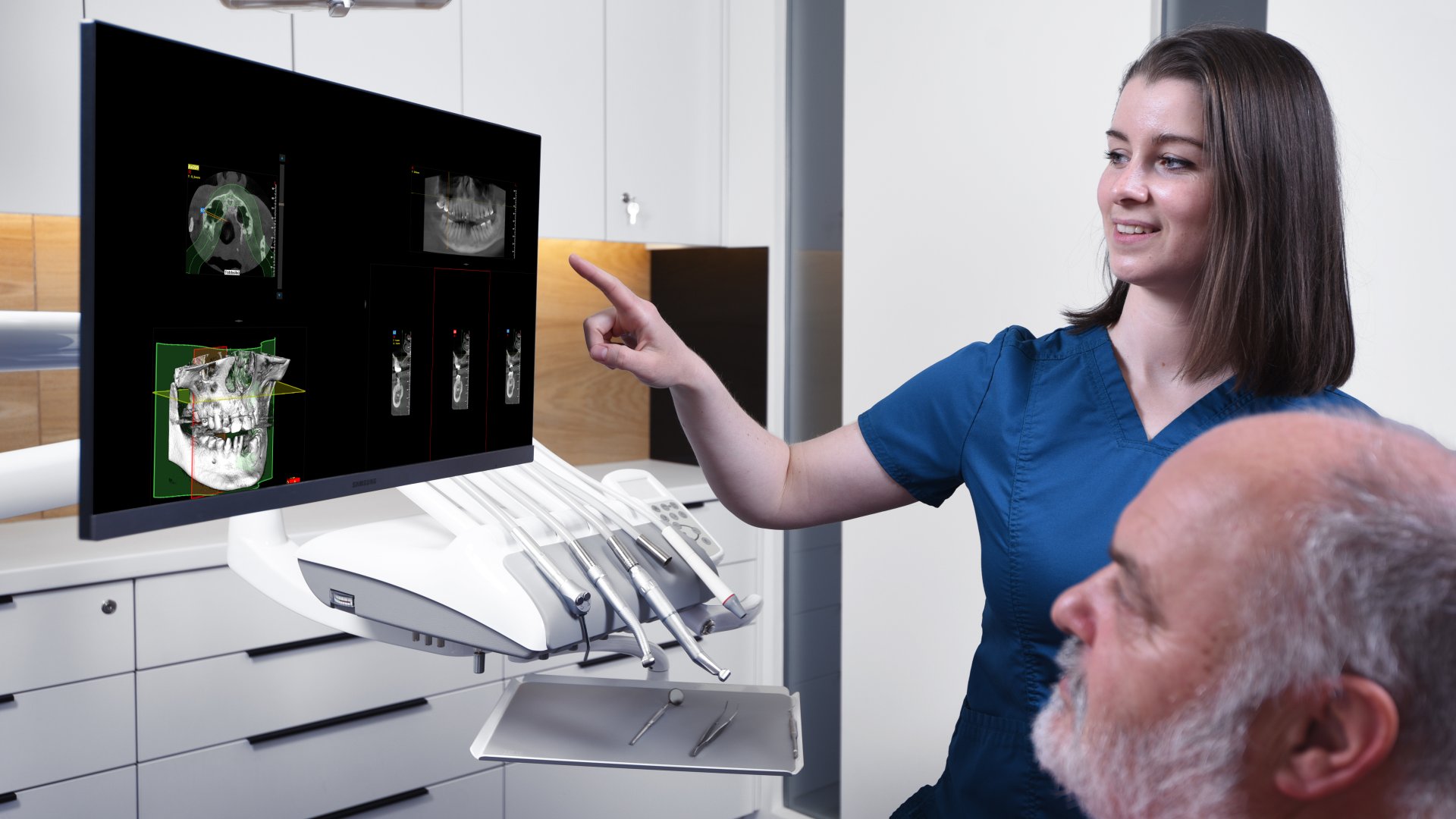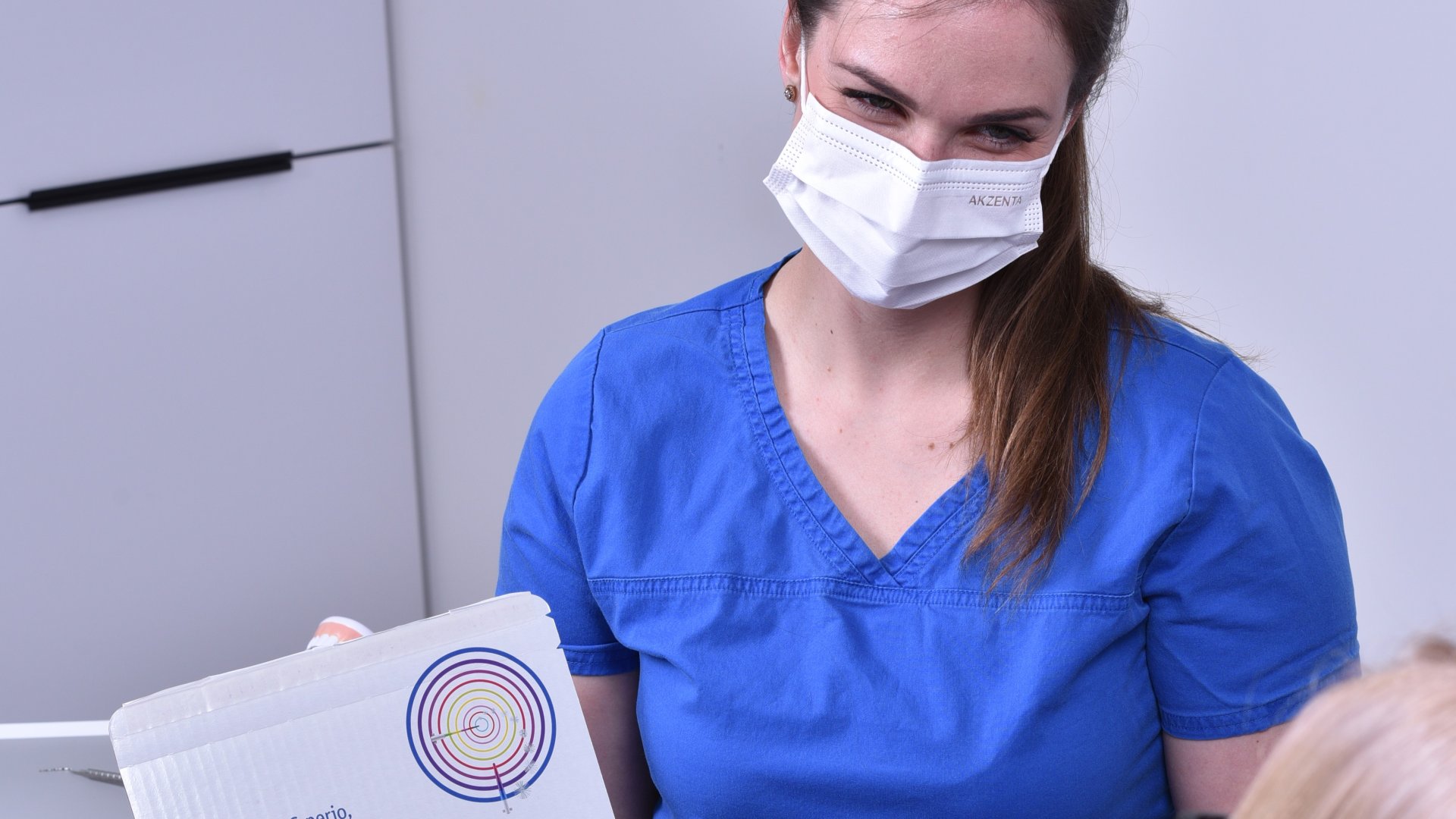Aesthetic Oral Surgery
At Pure Dental we offer modern aesthetic oral surgery procedures to improve both the health and appearance of your gums and smile. From frenectomy to gingival grafting we provide solutions that enhance comfort, function and facial harmony.
Aesthetic oral surgery in Budapest, lip & tongue frenectomy, gum contouring, crown lengthening, gingival grafting and vestibuloplasty at Pure Dental.

Frenectomy removal of lip or tongue ties
In cases of thick or restrictive lip or tongue frenulum these anatomical structures may need to be surgically removed to prevent functional or aesthetic problems.
Why is frenectomy sometimes necessary?
In newborns, a strong tongue tie can hinder proper breastfeeding. While this is often treated early some cases are missed and only cause issues later in childhood, such as difficulties with pronunciation (especially the “R” sound). In collaboration with a speech therapist frenectomy may be recommended in such cases.
In adults, frenectomy is less common but can still be indicated, particularly for cosmetic reasons. A prominent upper lip frenulum may cause spacing between the front teeth or interfere with oral hygiene. In cooperation with an orthodontist, we may remove the frenulum to prevent or correct such concerns.
I will call to make an appointment: +36 30 1588 848
REQUEST AN APPOINTMENT ONLINE
Electrosurgical gum contouring
Gum reshaping is typically done for cosmetic enhancement. Ideally the gum line follows the enamel cementum junction. However in some patients the gum may extend further down creating asymmetry or an imbalanced pink-white ratio.
- Can involve one or multiple teeth
- Restores a harmonious, symmetrical gum line
- Often eliminates the need for additional cosmetic restorations
- In some cases, veneers or crowns may also be required to achieve the desired result
Surgical crown lengthening
This procedure is recommended when a filling or crown needs to be placed but the tooth is decayed or fractured below the gum line.
With surgical crown lengthening we reposition the gum margin to expose more of the tooth structure ensuring proper isolation and allowing the restoration to be safely placed.
It is also used for cosmetic purposes, to correct uneven gum lines or improve proportions between the teeth and gums. If necessary we also reshape the underlying bone to enhance the final aesthetic outcome. In many cases this procedure is combined with veneers or crowns for a complete smile transformation.
Gum grafting CT graft, FGG & tunnel techniques
If the gum tissue around a tooth or implant is thin, receding or lacks volume soft tissue grafting is recommended to improve gum thickness, quality and overall appearance.
- Prevents or treats gum recession
- Improves long-term aesthetics and oral hygiene
- Commonly needed in patients with thin gum biotype
- Protects the roots and implants from exposure and inflammation
Grafts are typically harvested from the roof of the mouth and transplanted to the affected area.
- If only connective tissue is used: CT graft (Connective Tissue Graft)
- If the graft includes surface epithelium: FGG (Free Gingival Graft)
Vestibuloplasty deepening the oral vestibule
The vestibule is the area between the lips/cheeks and the gums. This soft tissue region helps maintain the stability and cleanliness of natural teeth and implants.
If the vestibule is too shallow or lacks firm gum tissue it can cause the gum margin to shift and reduce sealing around teeth or implants. This increases the risk of recession, inflammation or peri-implantitis.
Vestibuloplasty deepens the vestibule and increases the amount of attached gingiva, enhancing both aesthetics and function.
It is particularly important for patients wearing removable dentures including implant-retained prosthetics.
Patient's reviews
Our patients have said about us
4.90
I have gone through a thorough and precise tartar removal, which I can thank to Renáta Szőcs. A kind, empathetic professional whom I would recommend to anyone.
Matthew
I received excellent, fast and polite care, I can only recommend it to everyone. Thanks.
I came to the clinic through a recommendation, with a few small aesthetic problems. Dr. I had a consultation with Orsolya Polyák, after which I knew I was in the best pos...
I was referred to the surgery for a more complex problem, and looking back on the past year, I am very grateful to everyone at the surgery.
From the first minute I felt t...
Very pleasant and clean environment. Patient (I'm afraid of him as a dentist) and professional dentist (Dr. Bertalan Németh) and the assistants did an excellent job. I ch...
Very kind reception, precise diagnosis and explanation of the possibilities. Professional work at a good price! I will come next time.
Professional team
I received excellent and painless treatments in the modern, well-equipped clinic. After the precise tartar removal, my teeth became beautiful white. My dental fillings ar...
The general consultation was really free. I received very precise information. Dispensaries with modern equipment. Dr. Nóra Boka very professionally and completely painle...
Request a consultation by filling in the form below!

